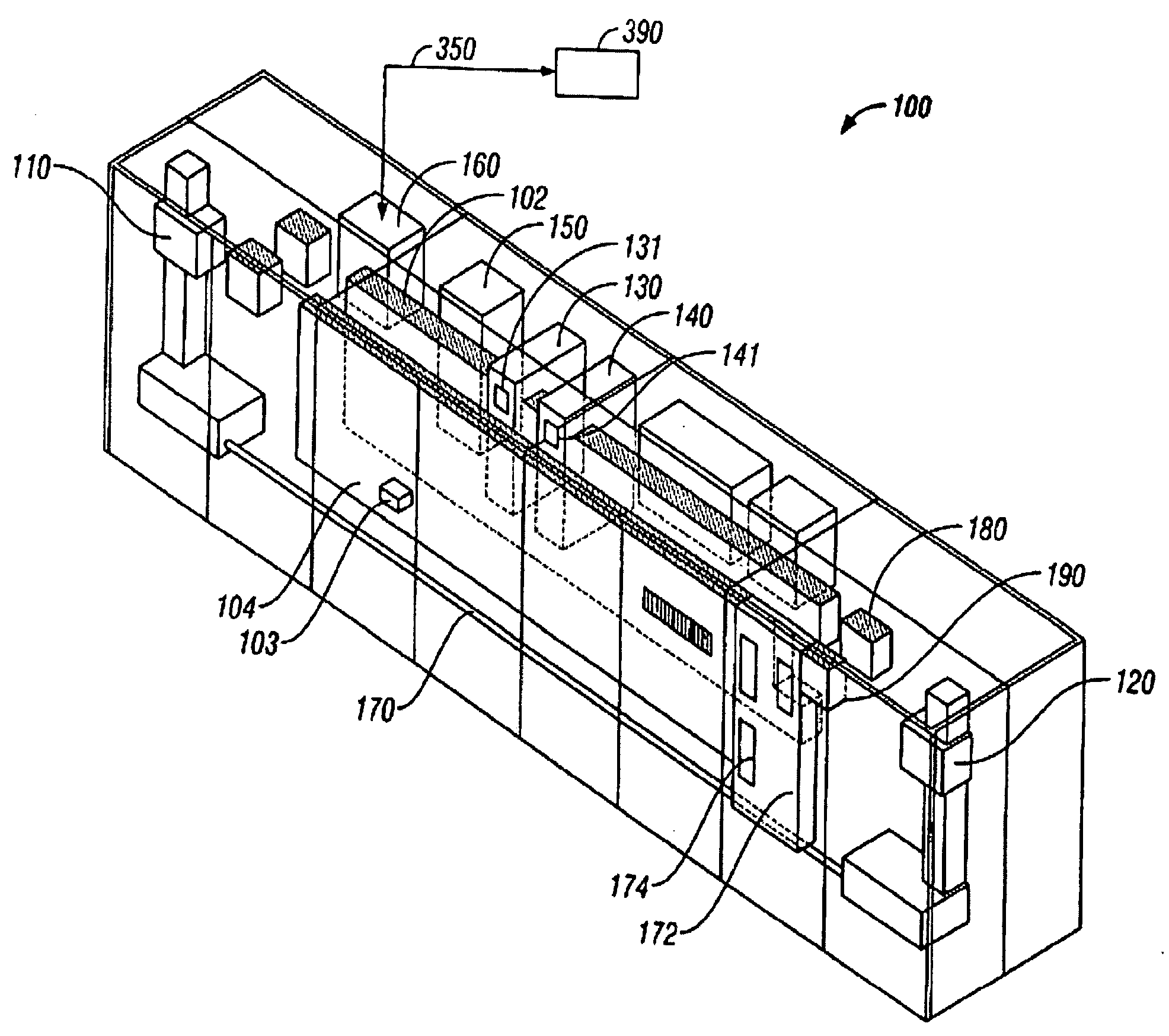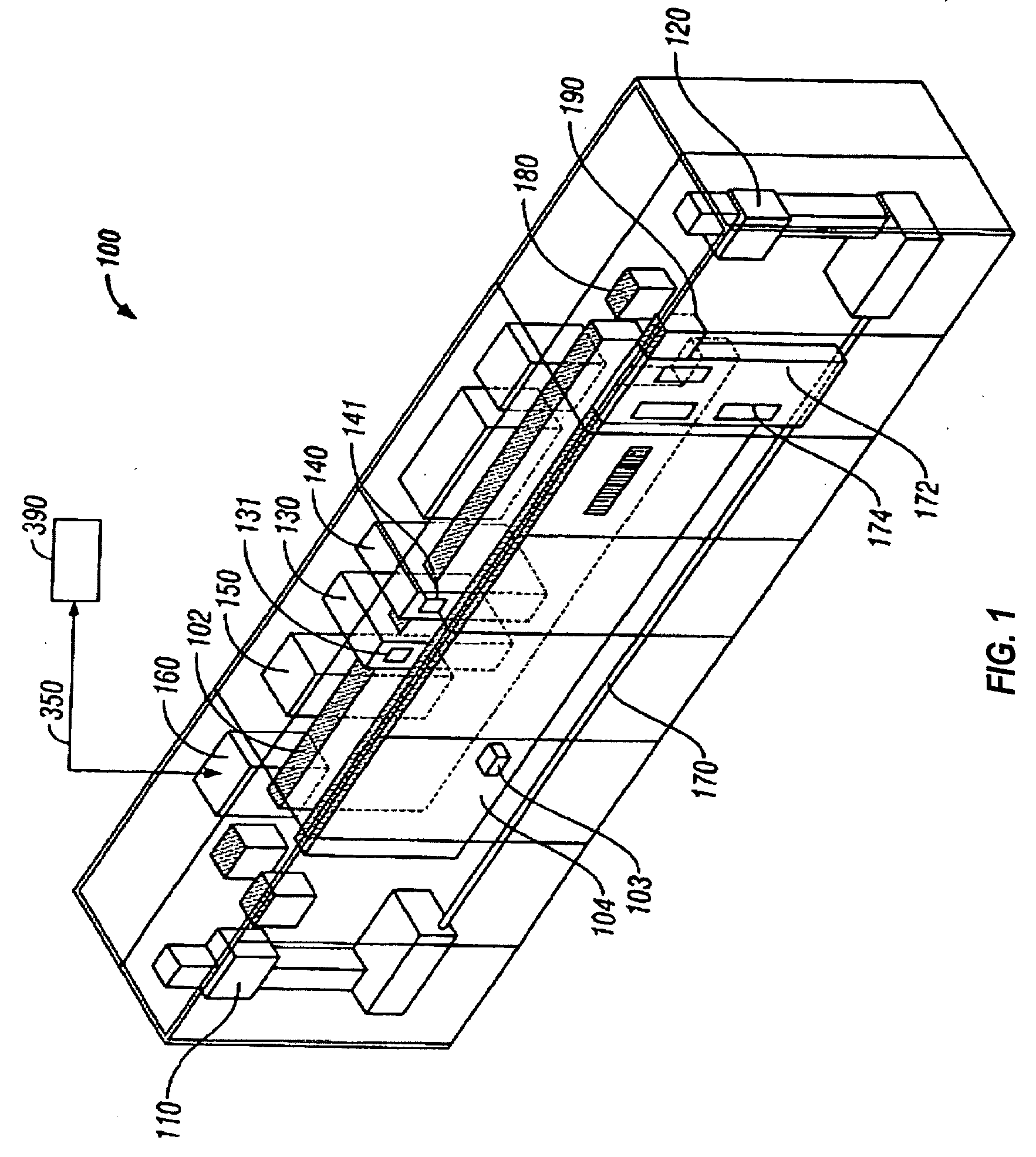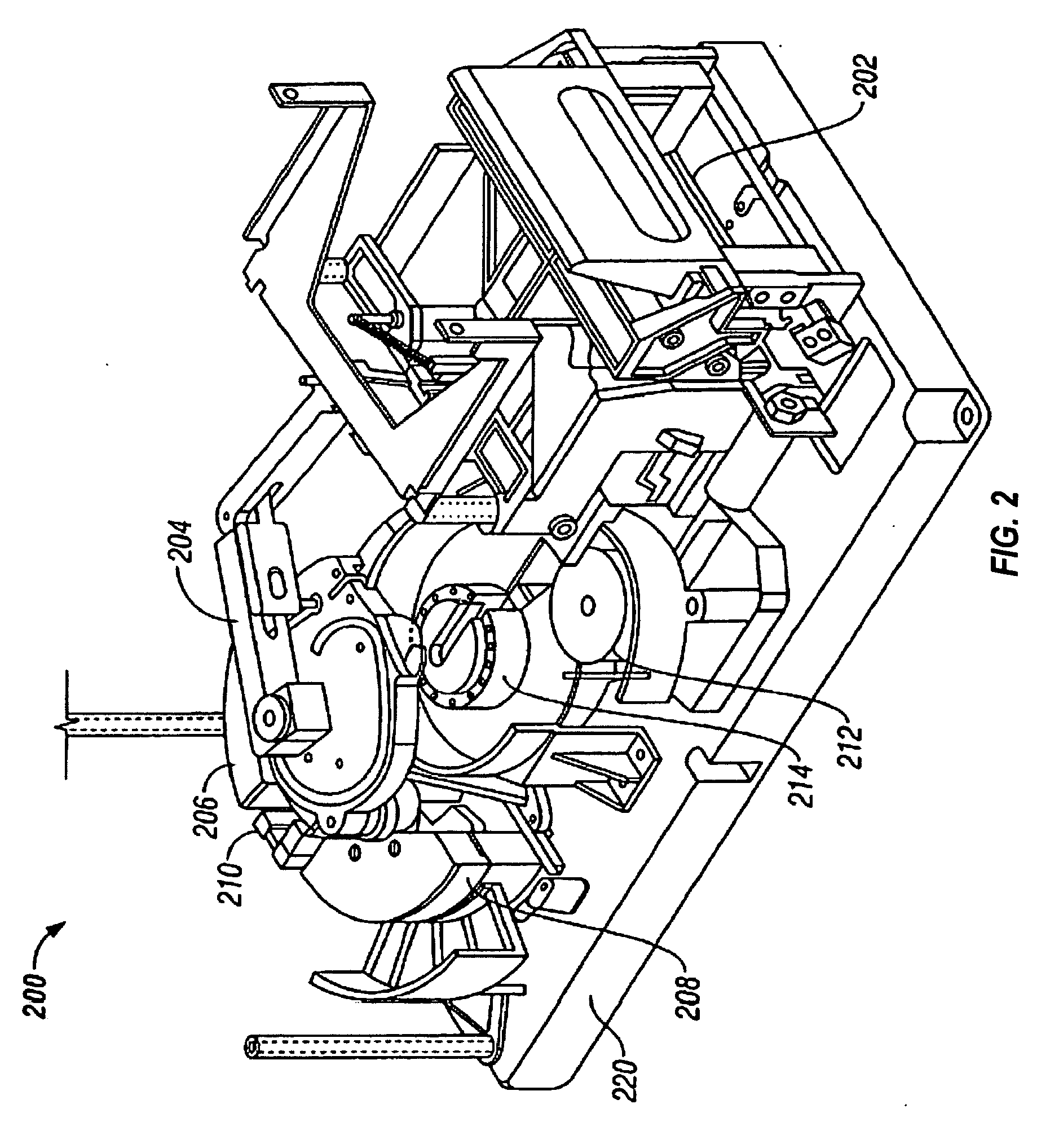Media cartridge storage device for an autoloading data storage and retrieval system
- Summary
- Abstract
- Description
- Claims
- Application Information
AI Technical Summary
Benefits of technology
Problems solved by technology
Method used
Image
Examples
Embodiment Construction
[0036] The following description is the best embodiment presently contemplated for carrying out the present invention. This description is made for the purpose of illustrating the general principles of the present invention and is not meant to limit the inventive concepts claimed herein.
[0037] Referring to FIG. 1, a data storage and retrieval system 100 is shown. In the embodiment illustrated, data storage and retrieval system 100 is depicted as a robotic library. The upper interface of controller 160 allows data storage and retrieval system 100 to communicate with one or more hosts 390 via link 350. Link 350 may comprise an Ethernet, Infiniband, TCP / IP, Fibre Channel-Arbitrated Loop, SCSI, ESCON, FICON, or the like, depending on the application. The lower interface of controller 160 communicates with a plurality of drives that are positioned in drive enclosures 130 and 140. Drive enclosures 130 and 140 receive removable media cartridges 103 (e.g., see cartridges in FIGS. 3, 6, and...
PUM
 Login to View More
Login to View More Abstract
Description
Claims
Application Information
 Login to View More
Login to View More - Generate Ideas
- Intellectual Property
- Life Sciences
- Materials
- Tech Scout
- Unparalleled Data Quality
- Higher Quality Content
- 60% Fewer Hallucinations
Browse by: Latest US Patents, China's latest patents, Technical Efficacy Thesaurus, Application Domain, Technology Topic, Popular Technical Reports.
© 2025 PatSnap. All rights reserved.Legal|Privacy policy|Modern Slavery Act Transparency Statement|Sitemap|About US| Contact US: help@patsnap.com



